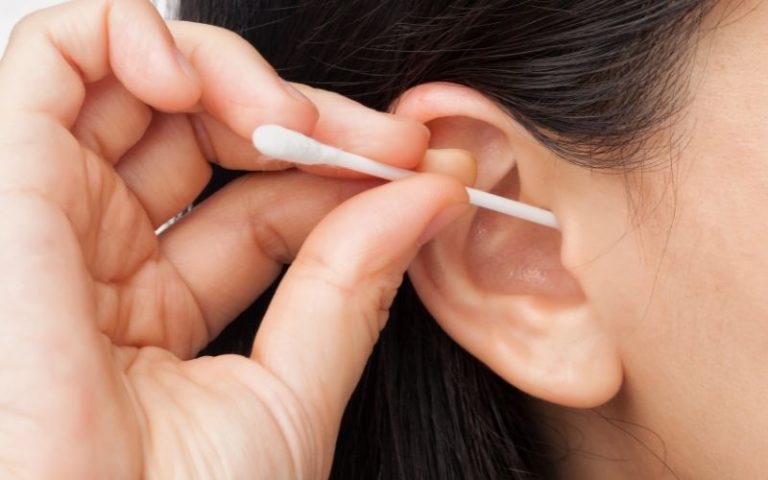Translucent Skin: The Truth You Should Know!

Are you proud of posing in front of a mirror with visible veins in your arms and wrist? That is okay if you are hitting the gym, but if you are not, watch out! You might have translucent skin.
Translucent skin is a type of skin condition in which your skin looks pale, light, and depigmented, projecting blue or purple veins. Learn more about translucent skin, its causes, diagnosis, and treatment measures.
Translucent Skin: What Is It?
Translucent skin is a type of skin that is less opaque in which light can easily pass through the skin. Some people may have translucent skin due to genetic factors. For instance, If your father or mother has translucent skin, you may have the same skin type.
In others, translucent skin might be due to a disease that might cause the skin to look pale and depigmented.
What does translucent skin look like?
Translucent skin is pale or light skin that looks different from normal skin tone. The skin condition might appear all over your body, but you can notice it clearly in the areas of the skin near your veins. Some of the places in your body where you can identify include
- Hands
- Wrists
- Top of the Feet
- Breasts
- Shin
- Ribs
Is Translucent Skin Attractive?
Not certainly. Translucent skin is often confused with bright milky skin. A bright or milky skin may have less amount of melanin. In contrast, translucent skin is a type of skin condition called “Hypopigmentation” or depigmentation, which makes the skin less opaque and UV- penetrable.
Translucent skin may lack an essential amount of melanin which makes the skin vulnerable to UV rays. If you have translucent skin, you should be very careful to go in the sun because you may not get sun-kissed but sun-slapped!
Translucent Skin: Causes
The primary cause of translucent skin is the lack/ absence of melanin pigment in the skin, leading to depigmentation. Apart from the genetic reasons, depigmentation occurs due to the following factors:
- Albinism (again an inherited genetic abnormality wherein skin retains no color),
- A fungal condition called tinea versicolor (yeast called Malassezia that inhibits the natural color when it overgrows in number),
- Vitiligo (when the melanocyte cells responsible for skin color are destroyed),
- Ehlers-Danros Syndrome, wherein the connective tissues are primarily affected, including skin, and lastly,
- Melanoma (skin cancer)
- Malnutrition and Dehydration.
Prolonged UV exposure, overuse of topical steroids, certain injuries, metal poisoning, inadequate hemoglobin count in the bloodstream (medically called anemia), extreme heat, excessive smoking, alcoholism, and even acne may trigger translucent skin conditions.
Translucent Skin: Diagnosis
Like every other skin condition, you can recognize the translucent skin visually. The standard diagnostic methods employed by a physician could include skin scraping, skin biopsy, and if needed, Wood Lamp examination.
Treatment Options for Translucent Skin
There are no specific treatment measures/ treatment options for translucent skin. Doctors may prescribe you medications based on the reasons or causes for translucent skin. Several treatment measures are available for translucent or pale skin except for genetic causes.
Cosmetic procedures for treating translucent skin
- Microneedling – A roller fitted with microneedles punctures the skin to initiate bleeding in minuscule amounts without skin damage. And overtime, collagen production increases the elasticity of the skin reducing paleness.
- Dermal Fillers – Dermal fillers puff up the void area and give a cushiony and tuft appearance and reduce the visibility of your veins.
- IPL – Intense Pulsed Light is a cosmetic procedure where a specific wavelength of light is employed to promote skin rejuvenation. Skin rejuvenation may improve your skin’s opacity, leading to healthy skin development.
- PDL – Photodynamic Therapy, a more intense form of light application, is a suggested procedure, but only post the application of a topical photosensitive product over the skin. It may cause redness or soreness post-procedure and is hence not recommended by many dermatologists for translucent skin.
NOTE:
- You cannot expect 100% results from cosmetic procedures.
- None of the above cosmetic procedures might work for you if your translucent skin is due to genetic causes.
- Consult your dermatologist before proceeding with the above-mentioned cosmetic procedures.
For melanoma patients, chemotherapy and radiation can make the person respond well and decrease the translucent appearance.
Gentle vaporization caused by lasers focused on the treatment area works wonders; however, this may require too many follow-up visits based on the recovery time.
Drugs for translucent skin
A typical drug of choice is Vitamin A derivative or Retinoids. These normally boost cell growth and help in giving a refreshed skin look.
If the causative factor is a fungal infection, commonly tinea versicolor, topical antifungal applications, and drugs can come to aid.
Tanning for Translucent Skin
Tanning is not recommended as it may damage your skin further. The United States Food and Drug Administration (FDA) does not recommend tanning.
Indoor tanning beds may help increase melanin pigment in the skin but may cause permanent skin damage. You can do certain things to prevent further skin damage due to translucent skin.
- While going outdoors, never forget to cover your skin.
- Wash your face with a cleanser and apply sunscreen to prevent UV rays from penetrating your skin.
- If you are out for swimming or long-term exposure to the sun, never forget to wear a shirt. This might help you from getting affected by the sun’s rays.
- Always wear a hat to protect your face and head. You can also try a cap if you find it more stylish.
- It will be better if you avoid the sun whenever possible.
If you feel embarrassed about your translucent skin, you can try the above-mentioned medical/cosmetic procedures with the consultation and recommendation of a certified physician.
Non-Medical Remedies for Translucent Skin
You can also try some home remedies to treat translucent skin. Foods including almonds, avocados, fruits, and vegetables rich in Vitamin E may help maintain your skin health.
Final Words
Some skin diseases leave patients with an abnormal visual impression that is mostly irreversible.
Like every other skin condition or disease that invariably affects the morale of the person for obvious reasons, translucent skin can cause emotional distress leading to depression and withdrawal from social activities. Consult your doctor immediately if you are facing any other symptoms along with translucent skin.
FAQs
Q: Can you apply lemon straight on your translucent skin?
A: Applying lemon extract directly to the translucent skin may cause irritation, dryness, and redness. In some cases, it increases the skin’s sensitivity to the sun.
Q: What is the thing to do before applying foundation on your translucent skin?
A: To achieve more even coverage, before foundation, apply a layer of green-toned concealer. It will help you cancel out the redness in your translucent skin and even out the tone well.





